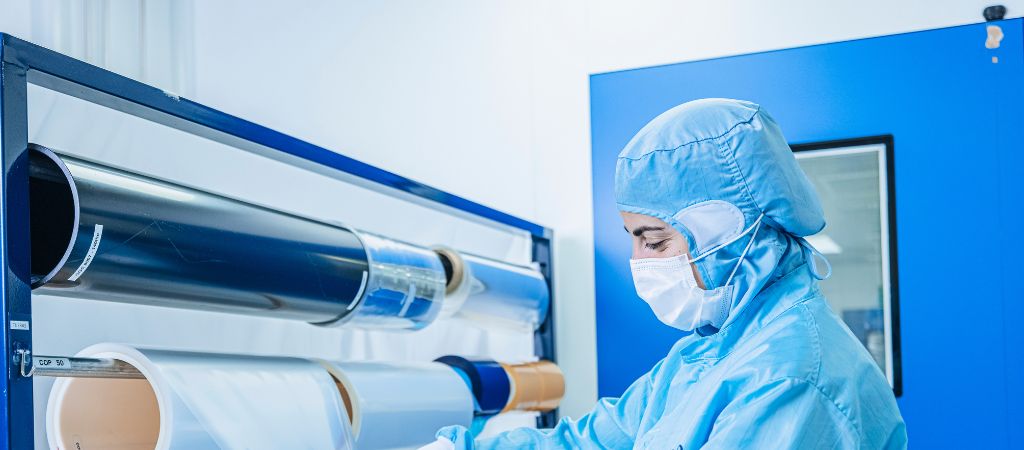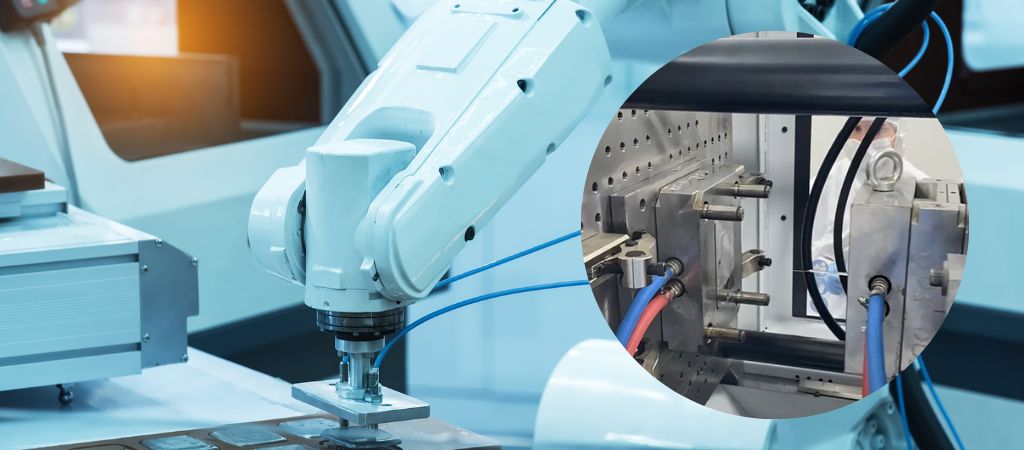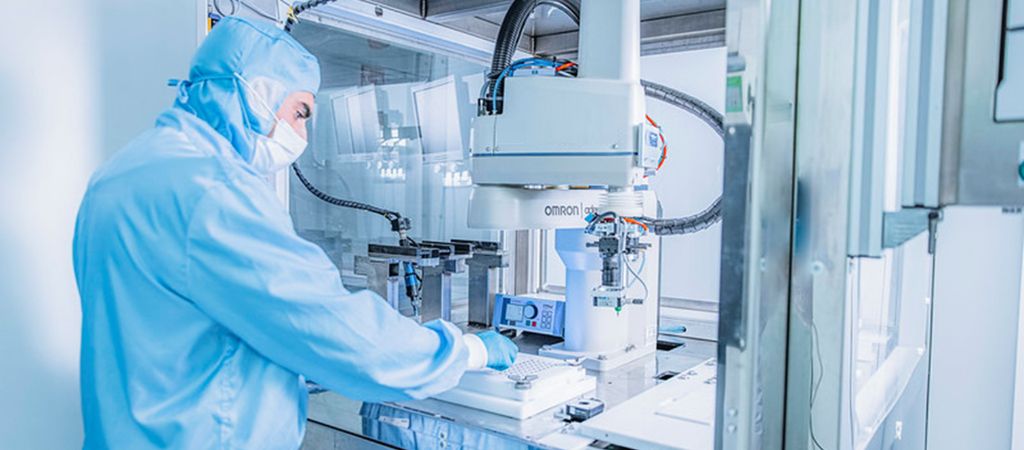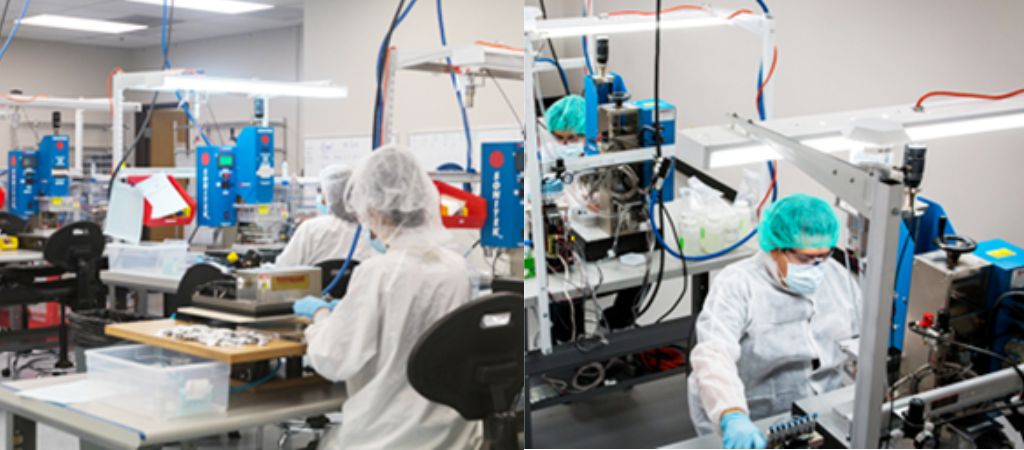
Supply Chain Risk Management: Questions to Ask Prospective IVD Microfluidic Contract Manufacturers
Prior to March 2020 , “supply chain problems” were a topic of conversation for just about nobody. Just-in-time inventory was the status quo and supply disruptions were rare. Flash forward a few years and nearly every company has been affected by the perfect storm of surging demand and shortages of materials and labor. Automotive manufacturers were not able to keep up with new car demand due to a shortage of microchips. Retailers were not able to refill shelves due to a backlog of ships waiting to offload at ports. And, of course, the shortage of various medical supplies during COVID is well documented.
In most cases these issues were mere inconveniences for consumers who had alternative choices. For IVD companies, supply chain disruptions have been far more serious. Even manufacturers that are vertically integrated cannot completely mitigate their risk. For example, Samsung is heralded as a vertically integrated organization with excellent supply chain management, but when COVID shut down one of its major South Korean components factories with 2,600 employees, the impact cascaded through many industries.
The longstanding focus on finance driven KPIs has been turned on its head. Companies are now acutely aware of their Achilles heels including overseas suppliers and short-term POs that make contract manufacturers feel like commodities rather than partners. For IVD companies looking to commercialize a new microfluidic assay or quickly scale a current device, here are some key questions to ask that can help reduce your exposure as part of a broader due diligence approach.
What is Your Process for Conducting and Sharing Quality Checks of Incoming Raw Materials?

Proven Expertise, From Concept to Market
The performance of microfluidic chips is sensitive to the quality and consistency of raw materials so that inspection of these materials is vital. Microfluidic Contract Development and Manufacturing Organizations (CDMO) must focus on inspecting incoming materials such as polymers and reagents, confirming that each raw material shipment received is the same as the last batch and meets the specifications outlined in the contract. However, delivered product specifications may shift over time as production equipment falls out of tolerance, or a random manufacturing hiccup may result in a batch of materials or components outside of normal ranges.
Even in small batch microfluidic PDMS manufacturing, for example, if the area where polymers and catalyst are mixed is not kept clean, PDMS slabs can get contaminated. Contamination is especially problematic for applications, such as cell culture, which demands plastics free of any volatile compounds that could kill cells. Contamination can also adversely impact optical transparency indices and reagent management (in blisters and other liquid or dry configurations). Have you ever seen food labels that warn consumers that the product was made in a facility that also processes nuts, gluten etc.?
Same concept.
_______________________________________________________
TE’s IVD Solutions Team offers CDMO services specializing in the design and manufacturing of microfluidic chips.
_______________________________________________________
Out of spec polymers, reagents or parts can have serious consequences on device performance so that simply checking shipment documentation and certificates is not enough. You need to have a risk management plan in place to ensure that the product you are receiving meets specifications – even if that means doing random tests at outside labs.
How do you mitigate the risk posed by an inconsistent batch of raw materials? Ask your CDMO about their QMS procedure for verification of raw materials. For a CDMO, a raw materials supplier should be a “critical supplier” in their QMS with a solid procedure for evaluating shipments of critical raw materials used to make your microfluidic device. Also, be sure to ask the CDMO how this information will be shared with you. It’s up to you to “trust but verify” and ideally in the preclinical development phase.
_______________________________________________________
Working with a development and manufacturing partner that also offers preclinical IVD CRO services in-house can be a smart way to reduce your supply chain risk, since potential issues will be discovered earlier and corrected more quickly by the in-house engineering team.
_______________________________________________________
Do You Have More Than One Source for Critical Components and Materials Used in Your Design?
Having a backup source for raw materials and components is always a good idea. Most contract manufacturers have a desire to do this but lack the time or money to perform the validation necessary. Also, with volume comes discounts, another disincentive for CDMOs to split their business among two suppliers. Nonetheless, you should ask if the contract manufacturer has a validated backup source for critical components such as connectors, valves, membranes and sensors used in your product. If your CDMO will also be designing the device, this validation should occur early in the design phase, which is a great way to further reduce supply chain risk. Having the design and manufacturing teams the same location is also hugely beneficial because they can work side-by-side to reduce supply chain risk.
Which Bonding Technologies Do You Offer and How Will You Validate Bonding Performance on Our Device?

Laser welding, adhesive, thermal, solvent and chemical bonding – there are many ways CDMOs approach bonding for microfluidic devices and that choice can have a big impact on the performance of the device. Very small microfluidic channels are far more sensitive to temperature and certain bonding technologies, which means that if the CDMO you are considering is pushing adhesive or solvent bonding as the solution for your device, understand that applying too much solvent can destroy the microstructure, and applying too little can affect adhesion and make the cartridge leak or even contaminate your assay. How does this relate to reducing supply chain risk? If your chosen CDMO does not fully understand the interaction between the assay, polymers and the recommended bonding technology, a bonding/material mismatch may occur with costly downstream consequences. Whether this problem occurs during the preclinical validation phase or – worse – as you start to transition to higher volume manufacturing methods, your CDMO might not be able to pivot quickly to another design or bonding technology because they do not have a validated alternative. To mitigate this risk, ask your prospective manufacturing partner to detail specific process validation that has been conducted. This approach is one reason it makes sense to work with a contract manufacturer that has in-house microfluidic design and development engineering expertise. They understand the actual performance between various polymers and bonding, not just the theory of how they should interact.
_________________________________________________________
CDMOs with design, clinical research and manufacturing teams at the same location reduces your supply chain risk, because all materials and components used in your design should have been validated early in the development process. If you separate design from manufacturing, the design engineers might not have practical knowledge of how their cartridge design will transition from prototype to pilot line to manufacturing scale up in the real world. See how TE’s IVD Solutions Team can help you manage that transition from IVD new product development to volume manufacturing.
_________________________________________________________
Where Are Our Critical Device Components Manufactured and Assembled?

To understand the supply chain risks to which you are exposed, you need to better understand the entire supply chain of your device. For instance, do you know where each critical component used in your device is being produced? Some may be produced in house by your CDMO while others may not. Take blister pouches for example. If your cartridge has on-board dry or liquid reagent storage, are the blisters off-the-shelf or custom? If custom, design validation needs to be done very early in the development process. An inexperienced developer may find that the blister design works just fine at lower volumes but has a much higher than expected failure rate when the transition is made to pilot line and finally mass manufacturing. Believe it or not, the physical location of the production facility can also have an impact. Areas of the world with high humidity simply have more problematic airborne fungal spores than facilities located in dry climates, which can further complicate production.
Another thing to ask is not only where components are being produced, but how. Are critical processes being done in ISO 7 cleanrooms and dry rooms? Do they have the right quality protocols for reagent storage / management? Is the vacuum chamber made from glass or metal? A particle-free environment is vital for microfluidic manufacturing.
Risk management at the forefront
If your eventual goal is to obtain US FDA 510(k) clearance or CE certification to the European In Vitro Diagnostic Regulation (IVDR), you will quickly discover that risk management is being emphasized by regulators more than ever. The ISO 14971 risk management standard (and the corresponding ISO TR 24971 guidance on how to implement ISO 14971) focuses mostly on product safety which includes your management of critical suppliers such as your chosen CDMO! While product safety is certainly the #1 focus, control over your supply chain should be an important part of your overall risk management plan. ISO TR 24971 points this out in section A.2.30: “Factors that should be considered include the application of new or innovative technology and changes in the scale of production. This can also involve changes in contract manufacturing, suppliers and vendors.”
Consider the underlying motivations of your CDMO

One last thing. While it may be tempting to work with a large offshore contract manufacturer organization (CMO) because of the scale and pricing they can offer at volume, keep in mind that its interest in helping you refine your design through the preclinical and clinical phases will be limited at best. The CMO business model is built around volume production. Plus, if a supply disruption occurs, do you think you will be one of their top priorities? Or are they most likely to take care of their large “bread and butter” clients first? A CDMO with a life science and IVD focus might be a better fit as they share a common vision and goal in seeing your technology develop to its full potential, and thus may be far more interested in offering expertise in the “design for manufacturing” process. If you win, they win.

